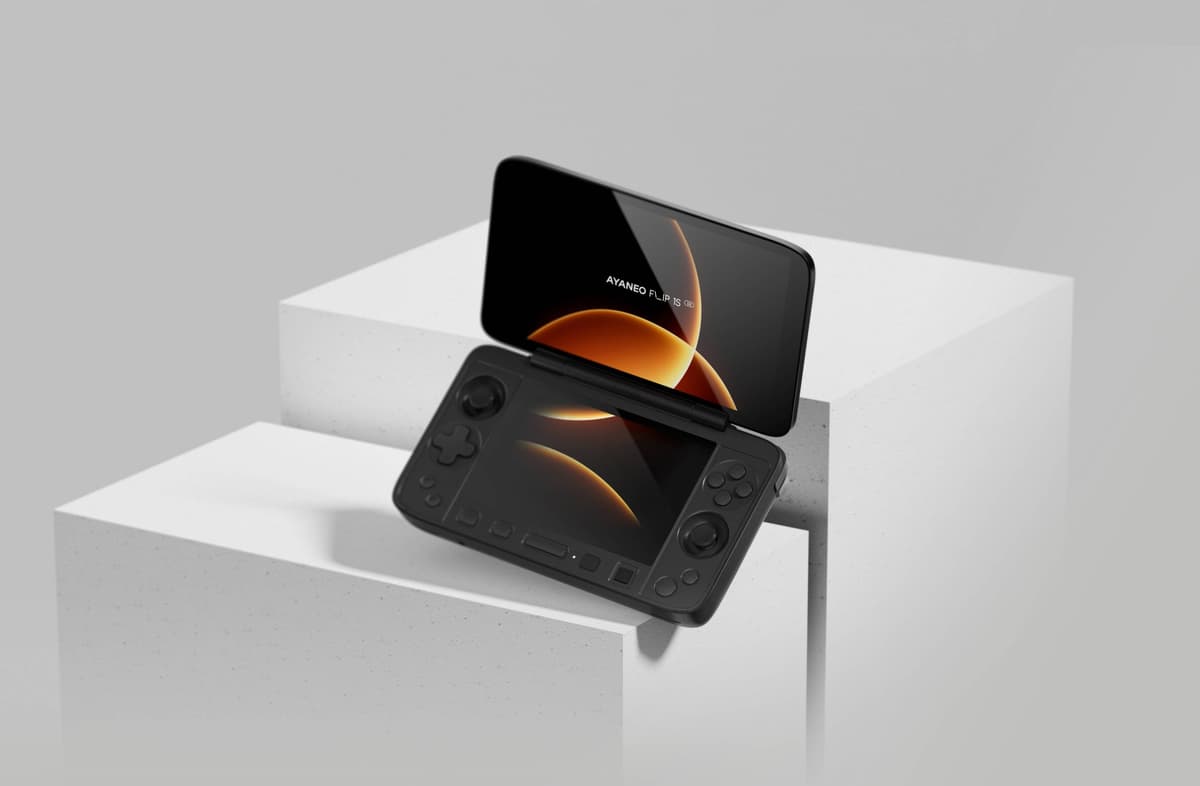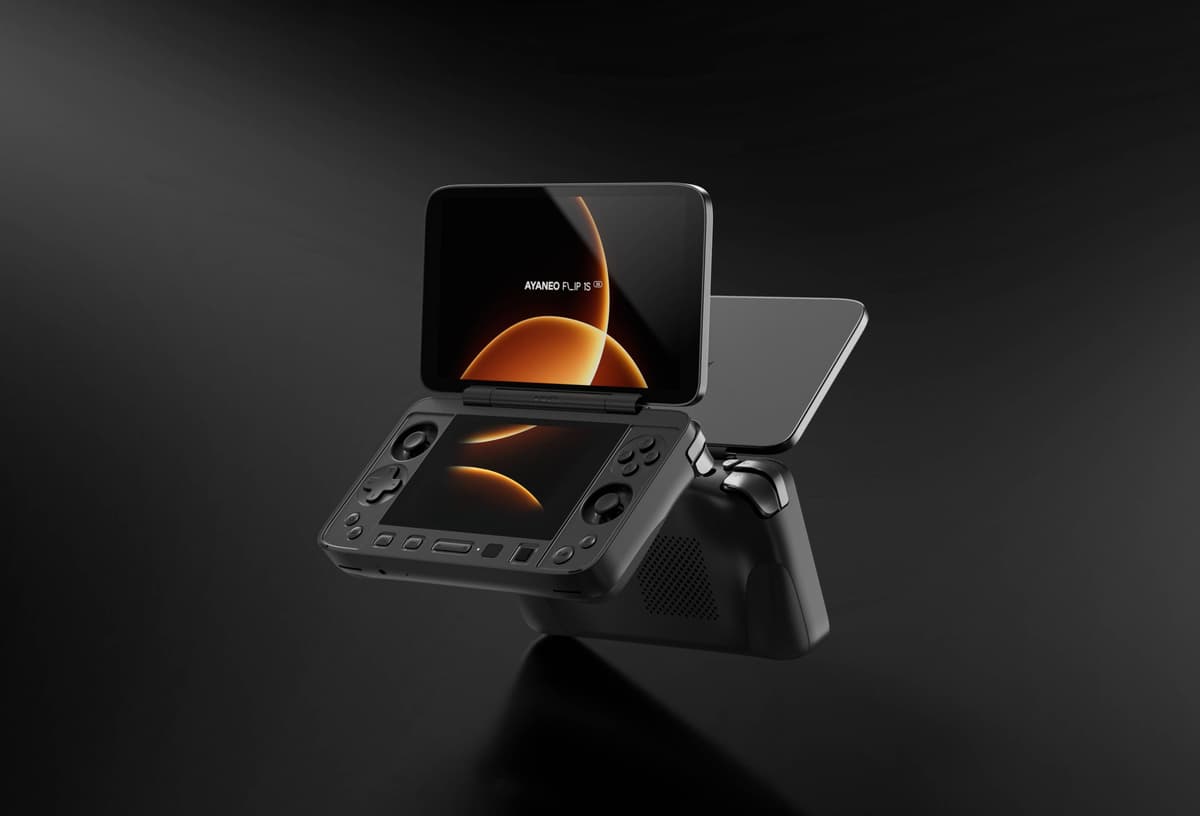
The Ayaneo Flip 1S DS channels classic Nintendo DS nostalgia in a modern Windows PC chassis—complete with a clamshell layout, a physical keyboard under the bottom screen, and a desktop-class AMD Ryzen AI 9 HX 370 APU. On paper, it promises gaming performance that dwarfs last-gen handhelds, plus genuine productivity chops. But promise doesn’t always translate to real-world brilliance. In this deep dive, we’ll break down specs, design choices, market context, usability quirks, and price expectations. By the end, you’ll know whether the Flip 1S DS is a bold leap toward the next era of portable gaming or an over-engineered novelty that looks great in press renders.
Below is a distilled look at the key hardware features that make—or break—this ambitious dual-screen Windows handheld.
| Specification | Detail |
|---|---|
| Model | Ayaneo Flip 1S DS |
| Primary Display | 7″ OLED, 144Hz, HDR |
| Secondary Display | 4.5″ LCD, 60Hz, touch-enabled |
| Processor (APU) | AMD Ryzen AI 9 HX 370 (Zen 4 + RDNA 3.5) |
| Graphics | Integrated RDNA 3.5 GPU |
| RAM | LPDDR5X (configurable up to 32 GB) |
| Storage | M.2 NVMe PCIe 4.0 SSD (256 GB–2 TB options) |
| Ports | 2× USB4 Type-C, 3.5 mm audio jack |
| Operating System | Windows 11 Home/Pro |
| Battery | 45 Wh (approximate) |
| Estimated MSRP | $1,299–$1,499 (expected) |
The Flip 1S DS’s headline feature is its AMD Ryzen AI 9 HX 370, a hybrid Zen 4/RDNA 3.5 APU that’s found its way into cutting-edge gaming laptops and mini PCs. On paper, it’s a monster—multicore performance for AAA titles plus AI accelerators for background tasks. In a handheld form factor, the challenge is sustainable cooling and power draw. Alongside that, the 7-inch 144 Hz OLED primary screen is a rare treat: ultra-fast refresh rate, deep blacks, and vivid colors for immersive play. And yes, top-tier OLED panels finally make moving targets feel silky smooth instead of jittery. The secondary 4.5-inch touchscreen is more modest at 60 Hz, but it opens up a world of secondary controls and multitasking. Together, these displays turn the Flip 1S DS into part console, part productivity hub.
It’s easy to slap high-end components into a slab and call it a gaming handheld. Ayaneo instead resurrects the dual-screen, clamshell DNA of the DS, complete with a backlit mechanical keyboard under the lower panel. This design isn’t just a gimmick: it unlocks real productivity on the go. Whether you’re drafting emails on a commuter train or coding in a cramped coffee shop, the Flip’s form factor outshines slate-style PCs. The hinge is reportedly robust, and the keyboard travel feels satisfying for a device this size. Controls flank the main display like a modern Switch Lite, with clickable analog sticks, ABXY buttons, bumpers, and triggers. If you’ve ever cursed the lack of tactile keys on a Steam Deck while trying to chat or adjust settings, the Flip 1S DS might be your salvation.

Today’s handheld PC market reads like a list of similar slabs: Steam Deck, ASUS ROG Ally, Lenovo Legion Go, and various GPD clones. They deliver good performance for indie titles and eSports, but rarely break from the mold. The Flip 1S DS aims squarely at power users—people who want full Windows compatibility, emulation nirvana, and genuine typing capability. Yes, the DS-style clamshell has popped up before in smaller, under-powered devices. What sets Ayaneo’s version apart is the promise of desktop-level silicon in a device you can actually hold. If they nail thermals and software support, the Flip could be the only dual-screen handheld that runs AAA PC games at respectable frame rates, while still letting you glance down at chat windows or system monitors without interrupting gameplay.
At first glance, a second display in a gaming handheld screams “DS nostalgia” or “nicety for emulators.” But the practical possibilities go far beyond that. Imagine mapping Steam’s overlay, Discord chat, hardware controls, or Spotify widget on the lower panel—freeing up the main screen for full immersion. Early coverage shows the bottom LCD reacting quickly to touch, and Ayaneo teases developer APIs for custom apps. If third-party titles or community tools fully embrace it, the second screen could transform how we multitask on a portable. Of course, unsupported games will ignore it, leaving you with a dumb display or basic desktop mirroring. Ayaneo’s willingness to supply drivers and SDKs will decide whether the second screen becomes a productivity hotspot or a shelf-warmed curiosity.

In a handheld, specs mean little without sustained performance. The key triad here is thermals, battery capacity, and Windows optimization. Past Ayaneo devices have impressed with solid build quality but struggled under long gaming sessions—surface temperatures can rival a hot saucepan. If the Flip 1S DS packs a beefy vapor chamber or multi-phase heat pipes, it might tame the HX 370 enough to avoid dramatic throttling. Yet the 45 Wh battery is modest for a powerhouse APU; expect 1.5–2 hours under heavy gaming, stretching to 4–5 hours in low-intensity or emulation tasks. Windows can be finicky with multi-display setups, so driver maturity will be crucial. If Ayaneo nails cooling and power management, the Flip will stake its claim. If not, it risks becoming an expensive novelty that you’ve got to keep plugged in if you want full performance.
This device isn’t for everyone. If your main goal is to play indie games and watch Netflix on the go, a Steam Deck or ROG Ally may serve you just fine at half the price. The Flip 1S DS is tailor-made for:
Windows on handhelds remains a mixed bag. Setup involves driver installation, firmware updates, controller mapping, and display scaling tweaks. Twice the screens means twice the potential headaches: misaligned scaling, driver conflicts, or applications that refuse to detect the secondary panel. Ayaneo plans a custom launcher and unified settings app, but early adopters might still patch in community fixes. Emulation can excel, but only if dual-screen profiles are built or user-configurable without registry hacking. PC gaming has plenty of front-ends—Steam, Epic, GOG—but none are optimized for split displays out of the box. In short, expect a few rounds of firmware and software updates before the experience feels seamless.

Official pricing and RAM/storage options are still under wraps. Based on previous Ayaneo launches and the cost of high-end OLED, expect starting models around $1,299, with top-tier SKUs closer to $1,499 or more. That puts the Flip in direct competition with premium gaming notebooks and handhelds, so the question becomes value per dollar. Are you willing to pay a $300–$500 premium over a Steam Deck for a second screen and a keyboard? Early bird discounts or bundles (controllers, docks, carrying cases) could sway budgets. Shipping timelines currently point to late Q3 or Q4, barring component shortages. Pre-orders may come with limited bonuses—Ayaneo’s past rollouts have included extended warranty and accessory credits for early buyers.
The Ayaneo Flip 1S DS is undeniably ambitious: a dual-screen clamshell Windows PC with top-tier APU performance and a built-in keyboard. If Ayaneo delivers on thermals, battery life, and robust software support, the Flip could define a new category of true power-user handheld. But if it stumbles on cooling or driver stability, it risks being an expensive collector’s item. For now, it sits at the intersection of dream gadget and potential workhorse. Stay tuned for hands-on reviews, and prepare for a wild ride if you decide to flip open your next portable.
Get access to exclusive strategies, hidden tips, and pro-level insights that we don't share publicly.
Ultimate Tech Strategy Guide + Weekly Pro Tips